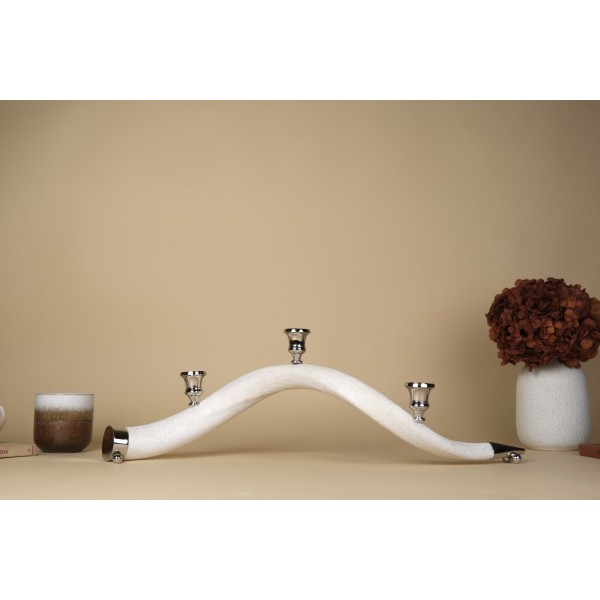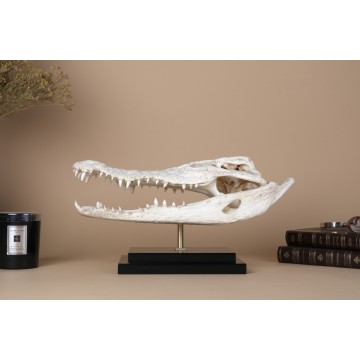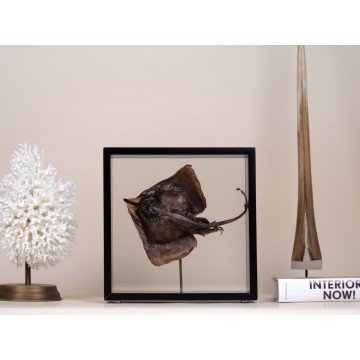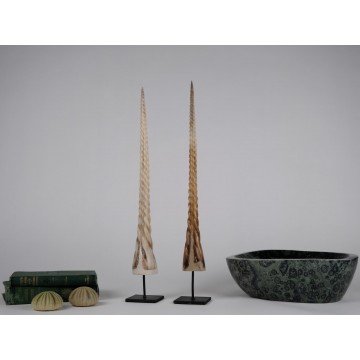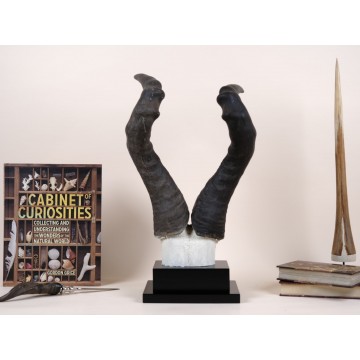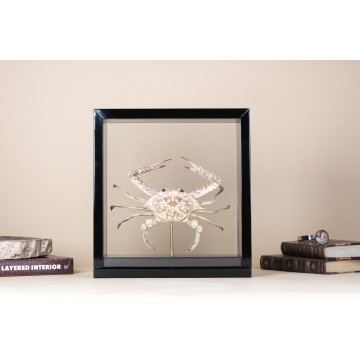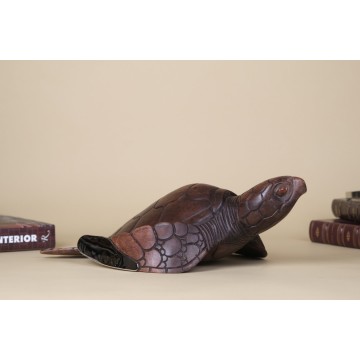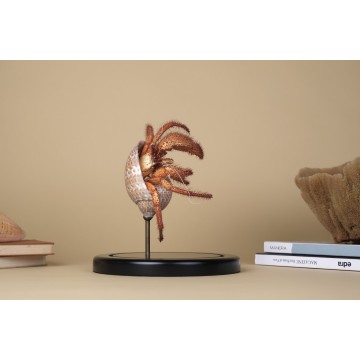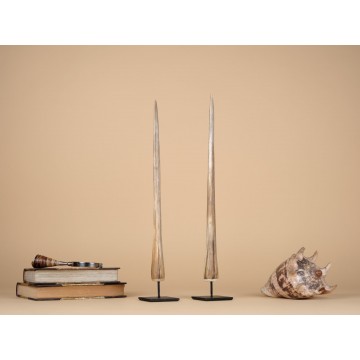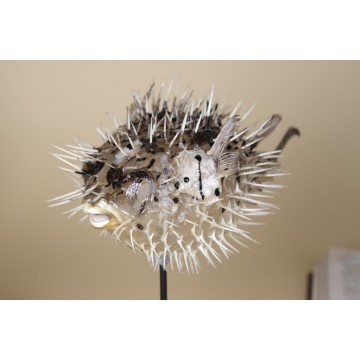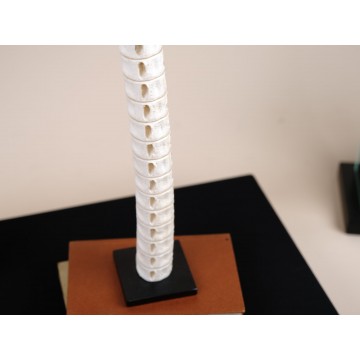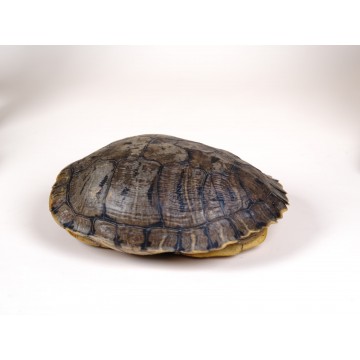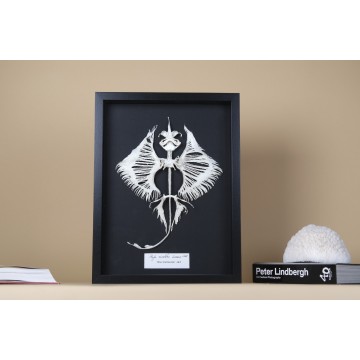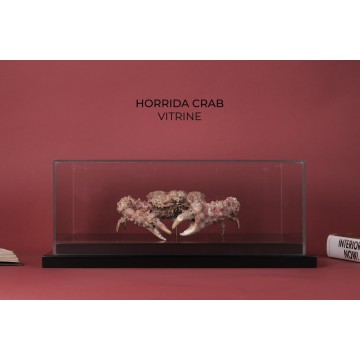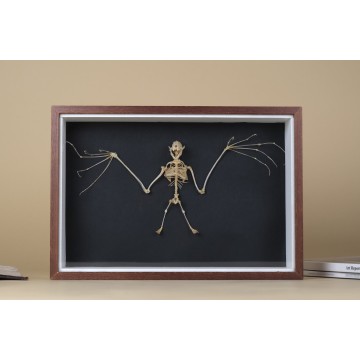Crocodylus skull
Crocodile Skull (Crocodylus siamensis) from a reputable crocodile farm in Thailand, supplied with its certification. This extraordinary piece, mounted on a sleek black lacquered wood base with a handmade brass support, commands attention and exudes a unique charm. With its awe-inspiring presence and impeccable craftsmanship, this crocodile skull adds an intriguing exotic touch to any space. It comes with a CITES certificate, ensuring its authenticity and responsible sourcing. Embrace the allure of this one-of-a-kind decorative treasure and get in touch with the wild side of life.

